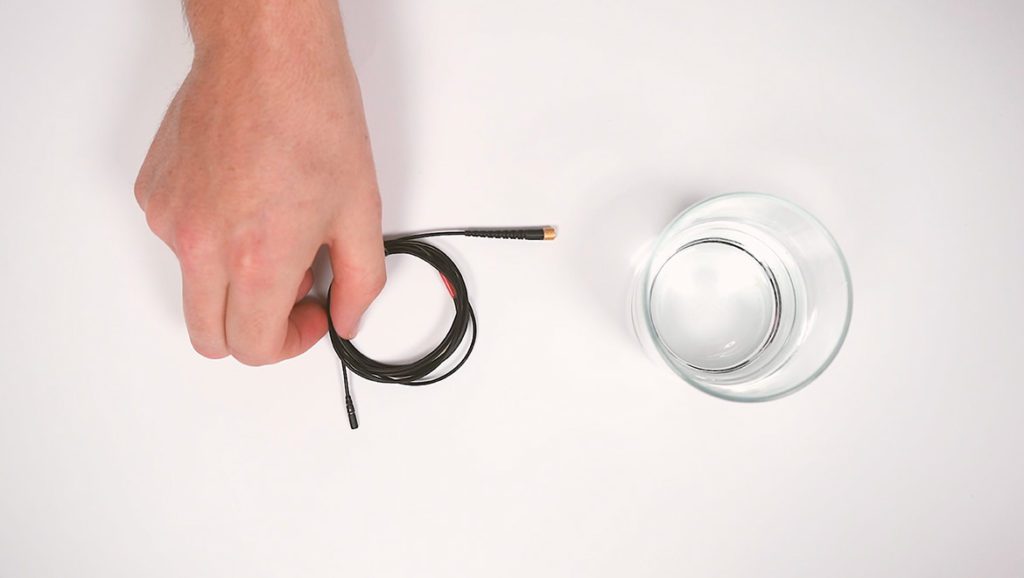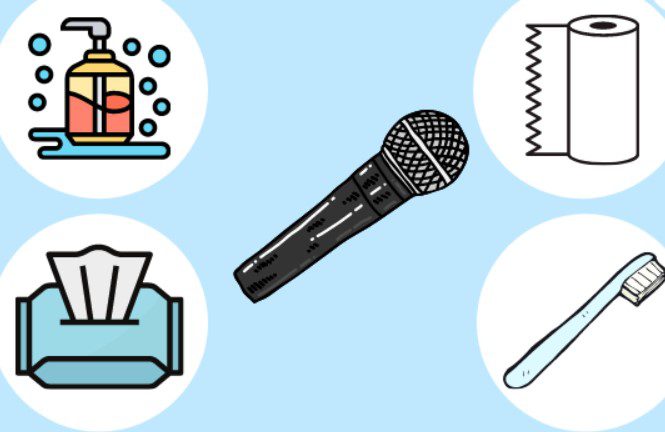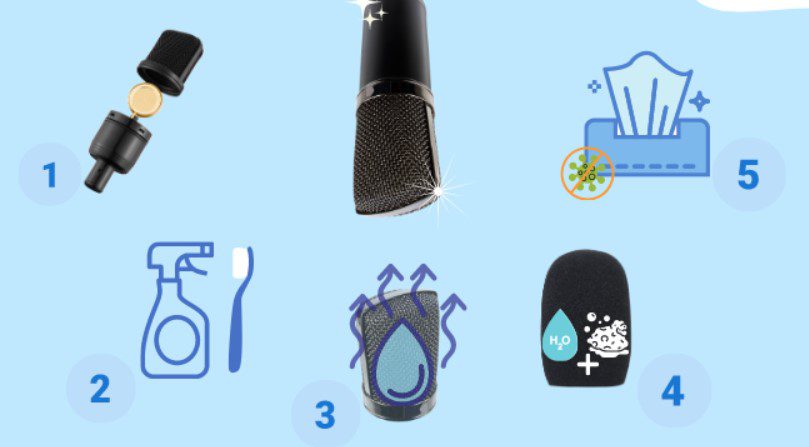Sophisticated microphones are used to record vocals or oral speech. In other words, they are located in proximity and need thorough cleaning.
Moreover, it is possible that a few customers can use the same microphone, so personal cleanliness and distance are required.
In a result, the security bars of the microphones and windshields can saturate with saliva, lipstick and smell of cigarette smoke. You need to comply with the following requirements.

The vocal microphone is designed to transmit voice both on stage during concerts and in all other cases for instance, during performances in a hall in front of a large audience. When you choose a microphone for vocals, take the microphone with noise insulation.
You may also like: 9 Best Binaural Microphones
The main characteristics of vocal microphones
- Focus. The vocal microphones perceive sound signals differently; some equipments hear, some of them don’t hear.
- Frequency. The microphones transfer different frequencies.
- Sensitivity. The higher the sensitivity of the device, the quieter the sound it picks up and vice versa. For the simplicity of understanding, a person needs to know: the lower the numbers, the higher the sensitivity.
- Sound pressure level. It shows how much sound the device transmits without distortion. Every device has their own dynamic range
- Noise level. The lower the self-noise level, the better. High noise level is a disadvantage of cheap devices.

Which models can a person choose?
Dynamic microphones
- Shure SM58. This model is very reliable and famous among singers and artists
- Shure SM7B. The model is created for rock vocals.
- Rode M1. Excellent microphones for live performances with built-in low noise level
- Sennheiser MD421. Versatile device that is suitable for both vocals and live performances
- Shure SM-7B and Shure Beta 58. These devices are good for extreme vocals
Recommendations before cleaning:
- Cut out the cable before thorough cleaning
- Don’t use for cleaning microphones harsh chemicals (hydrogen peroxide, acetone, acetic acid and others)
- Wipe the surface with a dry napkin with microfibers
- Use a spray only on the napkin for dispersion of the substance
- Before pairing it let the product dry
- Clean the microphones thoroughly and frequently
- Stay away from the situation when someone else has access to your microphone. Ideally, everyone needs to have the own microphone
- Exploit the microphones with a windshield or special protective case for them

Antibacterial disinfecting products can damage or break some details of the microphone if you use it often. Before cleaning, wash your hands according to personal hygiene rules and put on latex gloves.
You may also like: 9 Best Microphones for iOS Under $100
The brush order for the surfaces of microphones
- Cut out all the cables from the microphone
- Disperse a solution of the isopropyl alcohol or ethanol and water in the ratio 70:30 on the dry napkin with microfibers . However, don’t over-wet the napkin.
- Wipe the whole surface of the microphone with the tissue drenched in the isopropyl alcohol
- Let the cleaned microphone dry fully before repeated connection with the cables

The brush order for removable grids of the capsule
- Take off the mesh carefully
- In order to sanitize it you are to wipe the outer and inner side of the grid with ethanol or isopropyl alcohol in 70 percentage or just immerse it with clean hot water (70 degrees) without the windshield, and then wipe with the napkin and let it dry
In order to clean internal elements of the microphone, you need to use a dry brush with soft bristles. Purify it with liquids is prohibited.
❗️❗️ Washing the grids of the capsule in a washing machine is prohibited, because it can hurt the details of the microphone.
It would be better if you work with your own removable grids and windshields.
You may also like: 9 Best Microphones for Canon Camera
The brush order for the windshields of the microphone
- Take off the windshield
- Immerse it in hot and heated to 60 degrees water and wash thoroughly
- Add some dishwashing detergent
- Rinse it in clean and warm water
- Let the windshield dry fully
- You are to use a hairdryer, however the airflow shouldn’t exceed 60 degrees

If the windshield is not removable, a person has to clean it holding the microphone upside down.
Use a pure humid toothbrush and scrape out the whole mud from the windshield. Holding the microphone upside down can prevent getting the excess moisture inside the equipment.
❗️❗️ It is prohibited to wash the windshield with ethanol, isopropyl peroxide or solvents. Moreover, you can’t wash it in the washing machine.
The brush order for cleaning the capsule
- Generally, the capsule of the microphone doesn’t require to be cleaned because there is solid defense. However, if you are eager to sanitize it, in particular you need to consult with a specialist of the service center. Only with the help of the professional, the capsule can be sanitized
You may also like: 9 Best 3.5mm Microphones

Recommendations for vocal microphone extension:
- Protect the microphone from dust and moisture
- Don’t allow the device to fall off the counter. It will lead to the microphone breakdown
- If you use a microphone every day, there is no necessity to put the microphone into the briefcase. You can leave it connected to the counter while covering it with a cloth case
- Some of the microphones are not calculated to record of loud sound. Don’t overload the device
- Use pop filters when you work with announcers and vocalists in order to avoid blowing out the membrane. It constantly extends the service life of the microphone
- If the microphone is used not as often, you need to keep the device in the briefcase. You shouldn’t keep it in the counter as it can fall and break easily.
The microphones in collaboration are needed to be cleaned and sanitized, preferably no longer than three or five times a day.
If a person complies with procedures described by the company, uses recommended disinfecting tools and materials, fully de-energizes he equipment and cuts out the cables before cleaning, and also connects back only after complete drying of the microphone, disinfection will be effective and harmless.